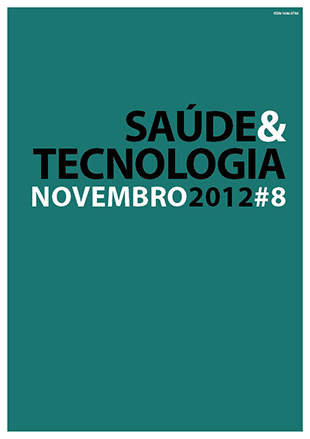Study of the detection efficiency of a surface contamination monitor according to the distance and the surface emission rate
DOI:
https://doi.org/10.25758/set.514Keywords:
Contamination monitor, Detection efficiency, Distance, Reference radiation sources, Surface emission rateAbstract
Introduction – A radioactive contamination needs to be quantified in case it eventually occurs. Therefore it is necessary to ensure that the operating conditions of a surface contamination monitor are characterized by determining its detection efficiency. This experimental study aims to determine the detection efficiency of a contamination monitor and evaluate the distance and surface emission rate influence on the detection efficiency. Methodology – A contamination monitor Thermo Mini 900E was tested with reference radiation sources of Carbon – 14 (C-14), Cesium – 137 (Cs-137), Strontium – 90 (Sr-90), Chlorine – 36 (Cl-36), and Americium – 241 (Am-241) with its emission rate traced to the Physikalish Technischen Bundesanstalt (PTB). Sources of Sr-90 and C-14 with two different emission rates for each one and distances of 1 to 20mm were used to study their influence on the detection efficiency. Results – With the increase in distance, the detection efficiency decreases. The most energetic radiation sources have higher detection efficiency, boasting a 15% decrease over 20mm whereas the sources bearing a smaller efficiency decrease of 10%. No influence of the surface emission rate in the detection efficiency was verified. Conclusion – Thus, it is concluded that the detection efficiency of a contamination monitor is dependent on the distance between it and the contamination as well as the type and energy of the radioisotopes present in the contamination.
Downloads
References
Cherry SR, Sorenson J, Phelps M. Physics in nuclear medicine. 3rd ed. Pennsylvania: Saunders; 2003. ISBN 9780721683416.
Streffer C, Dietze G, Eckerman K, Menzel H, Stather J. Basis for dosimetric quantities used in radiological protection [Internet]. Ontario: International Commission on Radiological Protection; 2005 [updated 2006; cited 2010 Oct 5]. Available from: http://www.icrp.org/docs/Physics_ICRP_Found_Doc_for_web_consult.pdf.
Gardner RP, Liu L. On extending the accurate and useful counting rate range of GM counter detector system. Appl Radiat Isot. 1997;48(10-12):1605-15.
International Atomic Energy Agency. Calibration of radiation protection monitoring instruments [Internet]. Vienna: IAEA; 2000. Available from: http://www-pub.iaea.org/MTCD/Publications/PDF/P074_scr.pdf
International Electrotechnical Commission. International Standard 60325 - Radiation protection instrumentation: alpha, beta and alpha/beta contamination meters and monitors. IEC; 2004.
Knoll GF. Radiation detection and measurement. 4th ed. Washington: John Wiley & Sons; 2010. ISBN 9780470131480.
Thermo Scientific. User's guide: mini 900 contamination and radiation monitors. Thermo Scientific; 2007.
Bé MM, Chisté V, Dulieu C, Browne E, Baglin C, Chechev V, et al. Table of radionuclides [Internet]. Sèvres: Bureau International des Poids et Mesures; 2006. Available from: http://www.bipm.org/en/publications/monographie-ri-5.html
Laboratoire National Henri Becquerel. Recommended atomic and nuclear data [Internet]. LNHB; 2010 [updated May 2010; cited 2011 Jan 2]. Available from: http://www.nucleide.org/DDEP_WG/DDEPdata.html.
Kessel W. ISO/BIPM guide: uncertainty of measurement [Internet]. ISO; BIPM; 1999. Available from: http://www.metrodata.de/papers/resistor_en.pdf
Saha GB. Physics and radiobiology of nuclear medicine. New York: Springer; 2006. ISBN 9780387307541.
Ranger NT. Radiation detectors in nuclear medicine. Radiographics. 1999;19(2):481-502.
Downloads
Published
Issue
Section
License
Copyright (c) 2022 Saúde e Tecnologia

This work is licensed under a Creative Commons Attribution-NonCommercial-NoDerivatives 4.0 International License.
The journal Saúde & Tecnologia offers immediate free access to its content, following the principle that making scientific knowledge available to the public free of charge provides greater worldwide democratization of knowledge.
The journal Saúde & Tecnologia does not charge authors any submission or article processing charges (APC).
All content is licensed under a Creative Commons CC-BY-NC-ND license. Authors have the right to: reproduce their work in physical or digital form for personal, professional, or teaching use, but not for commercial use (including the sale of the right to access the article); deposit on their website, that of their institution or in a repository an exact copy in electronic format of the article published by Saúde & Tecnologia, provided that reference is made to its publication in Saúde & Tecnologia and its content (including symbols identifying the journal) is not altered; publish in a book of which they are authors or editors the total or partial content of the manuscript, provided that reference is made to its publication in Saúde & Tecnologia.







